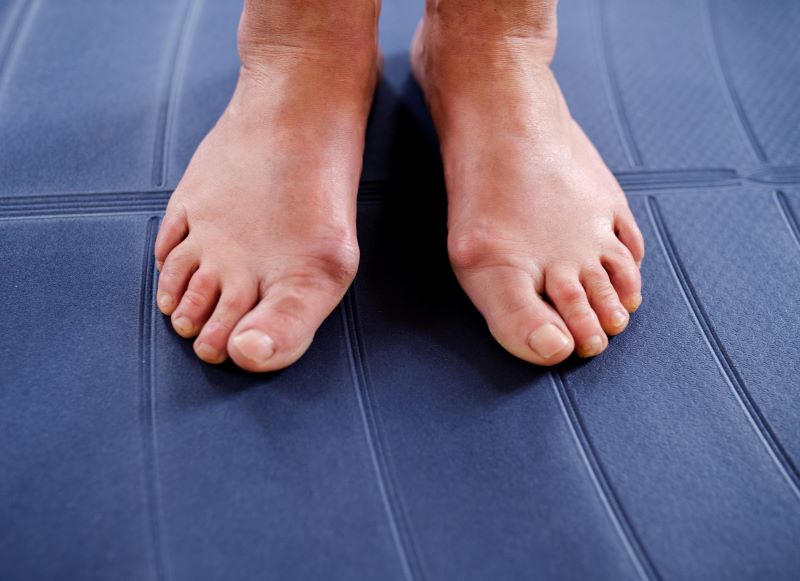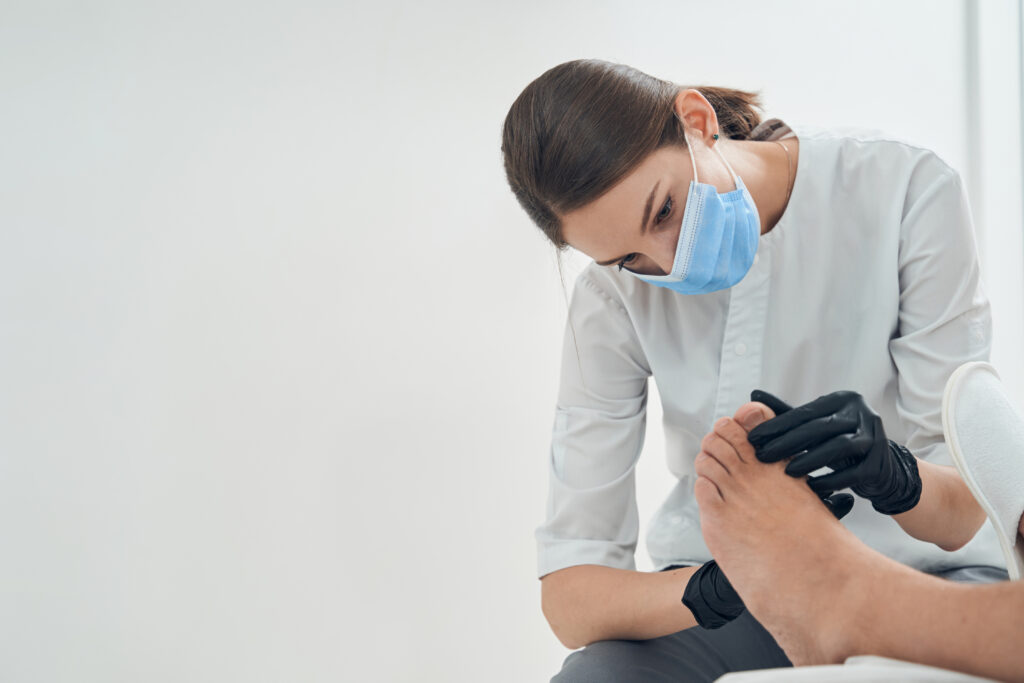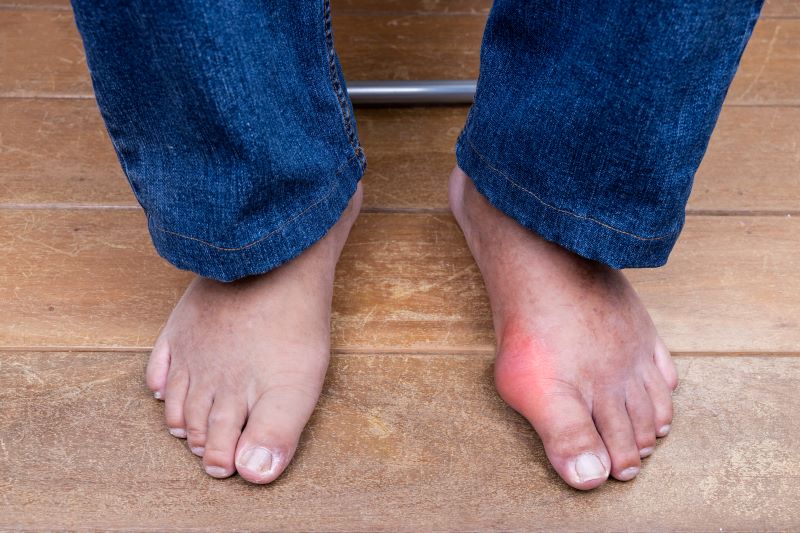One of the most common questions people ask a podiatrist is whether or not you can correct bunions without surgery. There are various ways that you can receive relief from your bunion pain with the help of a podiatrist, and without the need for any surgery. In fact, non-surgical bunion treatments are always the first approach to provide you with effective relief. You usually try the most conservative, non-invasive approaches first, then other more invasive options are engaged if non-invasive ones prove unsuccessful. In this article, we’ll discuss what non-surgical bunion treatments are available to you, and how to shrink bunions naturally.
 What Is a Bunion?
What Is a Bunion?
A bunion is a lump on one of the sides of a foot on its big joint. When the muscles and bones in a foot are out of their proper alignment, it may develop a bony bump. If you believe that you may have a bunion, know that you’re not alone. Bunions affect up to one-third of Americans. When the bones located in the front part of your foot begin to move out of place, the tip of your toe can start to pull in the direction of your smaller toes. This redirection forces the joint located at the base of your affected toe to stand out. The skin that presides over the resulting bunion may be sore and red in appearance. Actions such as wearing narrow, tight shoes can worsen a bunion.
Bunion Treatments
Though they are a fairly common and natural medical condition, bunions are often seen as painful, embarrassing, and debilitating. You may want to spend time with your family and friends or just enjoy a walk, but the pain you are experiencing in one or both of your feet is too much for you to do so. Some people also have to be on their feet each day while experiencing the pain of bunions. Some of the non-surgical bunion treatments that can relieve the pressure and pain of a bunion are padding, changing shoes, medications, applying ice, and shoe inserts. Non-invasive and non-surgical methods for treating bunions have been successful for many people suffering.
Bunion Corrector
When a bunion develops on one of your feet, there are a few different methods for treating it. One method is with a bunion corrector. A bunion corrector is a popular non-invasive treatment option that works to effectively straighten the affected toe. However, research suggests that a bunion corrector does not fully address a bunion, but rather addresses some of the symptoms of a bunion. A bunion corrector is not widely shown to address the causes of a bunion. It forces the affected toe back into its proper position, but this likely won’t affect the root reason why your bunion has formed. The root cause of a bunion is inside not on the outside.
A bunion begins to form because tendons, muscles, and ligaments have lost their delicate balance. To properly re-establish the proper balance of the inner workings of your foot, you must reposition the tendons, muscles, and ligaments in the affected area and then work to re-align the toe joint. Bunion correctors can vary in their precise design but usually fit over part of the foot similar to a sleeve and have a spacer to fit between your affected toe and the next toe to it. Other types of bunion correctors are splints that maintain the straightness of your toe by supporting the affected toe from the side. These splints don’t usually fit into shoes and their design is for overnight use. The hope is the toe will stay in the proper position alone given time.
 How to Shrink Bunions Naturally
How to Shrink Bunions Naturally
Research has shown that you can work to shrink bunions naturally with the help of certain behaviors and special items. You may relieve bunion pain and discomfort with wider shoes that provide more adequate room for your toes. If you currently have a bunion or struggle with the presence of bunions, consider investing in some wide shoes that have a soft sole and a low heel. This has shown results in reducing some of the pressure put on the toes. You may also try bunion pads. These soft pads fit into your shoes and can help keep your shoes from rubbing on your bunion and further irritating your condition.
Other ways to naturally shrink your bunion are with an ice pack, paracetamol, ibuprofen, or weight loss. With an ice pack, simply wrap the pack in a towel and place it on the bunion for around 5 minutes at a time. This treatment can help to reduce the amount of inflammation and pain in the area. It has also been shown to control and reduce the size of bunions. Medicines such as ibuprofen or paracetamol can work to provide pain relief and decrease inflammation. If the pain is not sufficiently reduced with the recommended amount, consider speaking to a specialist. With a little weight loss, you may also reduce pain and swelling.
Bunion Splint
You can also use a bunion splint to provide you with some relief. A bunion splint wraps around your foot to temporarily align your toes. Most people wear splints at night as they can’t be worn at the same time as shoes. The temporary alignment can provide you with some relief while you wear the splint. However, when the splint is removed, so will the benefits of alignment. These splints don’t straighten toes permanently or effectively prevent a bunion from progressing further. You may sleep better and have some relief with a splint, but it doesn’t work to accomplish the full correction of the root issue of your bunion. For more lasting relief during the day, you can consider some custom orthotics or a corticosteroid injection.
 Treating Your Bunion Without Surgery
Treating Your Bunion Without Surgery
There are a few different ways you can experience effective bunion relief without the need for surgery. If these non-invasive methods fail, speak with the Foot & Ankle Specialists of Illinois for more lasting relief.

